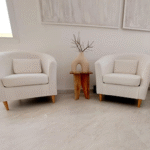Transforming your attic into a functional living space doesn’t have to drain your savings. With careful planning and expert guidance from Loft Converter London, homeowners can achieve stunning results without overspending. Loft conversions are among the most cost-effective ways to increase living space and add value to your property. Whether you need an extra bedroom, a quiet office, or a relaxing studio, there are many ways to keep expenses under control while maintaining quality. By focusing on smart design, efficient use of materials, and professional craftsmanship, you can create a beautiful loft conversion that fits your lifestyle and budget perfectly.
Start with a Clear Budget Plan
Before any work begins, it’s essential to set a realistic budget. Consider not only construction costs but also design fees, planning permissions, and finishing touches. Having a detailed financial plan helps you prioritise essentials and avoid unexpected expenses. Requesting a few detailed quotes from reputable specialists will give you an idea of average market prices. Ensure that your chosen contractor provides transparent, itemised estimates. Clear communication and planning will keep your project on track financially and prevent unpleasant surprises later on.
Choose the Right Loft Type for Your Home
The type of loft conversion you choose has a big impact on overall cost. Options like roof light conversions are typically the most affordable since they require minimal structural changes. Dormer or mansard conversions cost more but offer greater headroom and floor space. Assess your home’s structure, roof style, and your family’s needs before deciding. In some cases, a smaller but cleverly designed conversion may offer better value than an extensive remodel. Your specialist can guide you on which design delivers the best balance between budget and practicality.
Reuse and Recycle Where Possible
One of the easiest ways to cut costs is by reusing materials where appropriate. Reclaimed timber, existing furniture, and repurposed décor items can give your loft character while saving money. Upcycling old doors or storage units not only reduces waste but also supports sustainable building practices. Even lighting fixtures and flooring can be sourced from discounted or reclaimed suppliers without compromising style or quality. A creative approach to interior design can make your loft both budget-friendly and unique.
Compare Quotes and Services
When working within a budget, don’t settle for the first contractor you find. Always compare quotes, services, and customer feedback. Look for professionals with a proven track record and clear cost breakdowns. For example, if you live in West London, a company experienced in Loft Conversion Ruislip projects will understand local property styles, regulations, and construction needs. Choosing a team familiar with your area helps save time, reduces risk, and ensures the final design suits both your home and your budget.
Plan for Energy Efficiency
A well-insulated loft conversion not only saves energy but also cuts long-term costs. Use high-quality insulation materials for walls, floors, and roofs to keep your home warm in winter and cool in summer. Double-glazed windows, LED lighting, and efficient heating systems can lower energy bills significantly. Though some of these choices might require a higher upfront cost, they deliver excellent value over time. Energy efficiency also enhances your home’s resale appeal, making it a smart investment for budget-conscious homeowners.
DIY Where Safe and Suitable
If you’re confident in basic DIY skills, there are small tasks you can handle yourself, such as painting, assembling furniture, or fitting shelves. However, leave structural work, electrical installations, and plumbing to qualified professionals. Trying to do complex tasks without the right expertise can lead to costly mistakes. Combining DIY efforts with professional support helps strike the right balance between cost savings and quality workmanship.
Focus on Simple, Functional Designs
Keeping the design simple is one of the most effective ways to stay within budget. Minimalist layouts not only look modern but also cost less to execute. Open-plan spaces with neutral tones, efficient storage, and smart lighting can make a small loft feel larger and brighter. Avoid unnecessary features that drive up costs, like elaborate built-ins or luxury finishes. Functionality should guide every design choice, ensuring your new space meets your daily needs without stretching finances.
Schedule Work Strategically
Timing can influence project costs. Booking construction during less busy periods might secure better rates or faster completion times. Avoid starting projects during peak seasons when labour and materials can be more expensive. Discuss timelines early with your contractor to align schedules efficiently. Proper planning prevents delays and helps maintain your budget throughout the project’s duration.
Final Thoughts
A loft conversion doesn’t have to be a luxury beyond reach. With thoughtful preparation, practical design decisions, and support from skilled professionals, you can achieve exceptional results without overspending. Focus on value-driven choices, sustainable materials, and simple yet stylish finishes. By doing so, you’ll not only expand your living space but also enhance your property’s comfort, efficiency, and long-term worth — all within a sensible budget.
Related Reads
- Custom Fitness App Development: Build the Fitness App Your Users Actually Want
- Finding the Top SEO Company in India: A Guide to Supercharging Your Digital Presence
- How Do Experts Approach Chimney Liner Replacement in Aurora
- Navigating Your First-Time Buyer Mortgage in the UK: A Practical Guide
- How to Maintain Financial Records with No Guarantor for Bad Credit?
- Office & Home Solutions – On-Site Printer Repairs in Dubai



